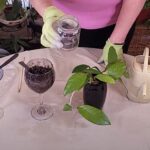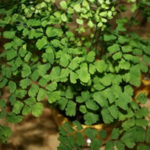Make Your Own Organic Houseplant Fertilizer
Making your own organic fertilizer for your houseplants has the same benefits of a home-cooked meal. You know the ingredients going into the fertilizer, and they tend to be a lot healthier than anything you can buy in a store. When you create your own organic houseplant fertilizer, you ensure that your indoor garden plants get the healthiest, most complete nutrition.
Formulating your own fertilizer is fun and easy, and the results are well worth the effort. Here is a list of ingredients for your fertilizer, as well as how much to add to your signature blend.
Alfalfa meal (2 cups)
Alfalfa meal is just what it says—meal from alfalfa hay. It may not sound impressive, but the truth is, this is one of the most powerful ingredients of your homemade fertilizer blend. Alfalfa meal contains triacontanol, which is a natural growth stimulant. Alfalfa meal also provides your plants with nitrogen.
Bloodmeal (1/4 cup)
Bloodmeal is dried blood. This is a rich source of nitrogen, comprising 13 percent. It also serves as a good animal pest repellent.
Bonemeal (1/4 cup)
Bonemeal is finely ground bone that contains a high percentage (10-12 percent) of available phosphate and up to 25 percent calcium.
Epsom Salt (3 tablespoons)
Epsom salt is mined and processed magnesium sulfate, which is composed of 10 percent magnesium and 13 percent sulfur. It provides a quick source of magnesium to plants.
Greensand (1/2 cup)
Greensand is mined from deposits that were originally parts of the ocean floor and are now found in the northeastern United States. Greensand is composed of 7 percent potash, as well as iron and silica.
Guano (1/2 cup)
Guano is aged bird or bat excrement. It looks like gray powder or pellets. Guano contains 15 percent nitrogen, 10 percent phosphate, and a small amount of potash, as well as calcium.
Kelp meal (1/2 cup)
Products containing kelp meal are usually made from dried and ground Ascophyllum nodosum, which is seaweed harvested from waters of the North Atlantic Ocean. Kelp meal contains a wide variety of trace minerals and potash, as well as amino acids and vitamins. It also feeds the beneficial organisms in the soil. And it contains natural growth hormones.
Worm castings (1 cup)
Also known as vermicompost, worm excrement is often called black gold, because of its many beneficial properties. Worm compost contains a variety of trace nutrients and has been shown to increase soil fertility and help plants fight off pests and diseases. It also improves soil structure.
Why are all of these ingredients important to your houseplants?
Much like the human body needs a wide assortment of vitamins, minerals and amino acids to function at top performance, so do your indoor plants.
Nitrogen is key in the production of chlorophyll, which is the major nutrient for stimulating leaf growth and keeps foliage green. A lack of nitrogen is the most common nutrient deficiency. It stunts plants and causes yellow leaves. Older foliage turns completely yellow, dries and falls off.
Phosphorus (phosphate) is responsible for promoting sturdy cell structure, healthy root growth, and abundant flower and fruit production. Without sufficient phosphorus, many flowering plants simply won’t bloom and plants will lose their overall vigor.
Potassium (potash) is an all-encompassing nutrient that plays an important role in photosynthesis and water and nutrient management. It also strengthens plants against pests and diseases. Potassium deficiencies often show up on the margins of large-leafed plants. The margins of older leaves become brown, dry and brittle.
For healthy growth, plants also need small amounts of other nutrients, which are often called micronutrients. Many, such as calcium and magnesium, work in tandem to give plants what they need. If plant soil lacks any of the minor nutrients, you’ll see a variety of deficiencies, especially in mature plants.
Magnesium is essential in the formation of chlorophyll and with its partner, calcium, plays a fundamental role in the manufacture of cells and their growth. A fairly common deficiency, insufficient calcium and magnesium lead to distorted new growth that doesn’t develop completely, as well as yellow dotting near the newest growth.
Sulfur is another essential micronutrient. It acts with nitrogen in making protoplasm for new plant cells and brings out the fragrance in aromatic plants.
Iron and zinc work together for cellular reproduction. Deficiencies in this duo lead to yellow dotting that starts midway into the plant and heads for new growth. And iron and zinc deficiency in some plants, such as citrus, leads to chlorosis.





